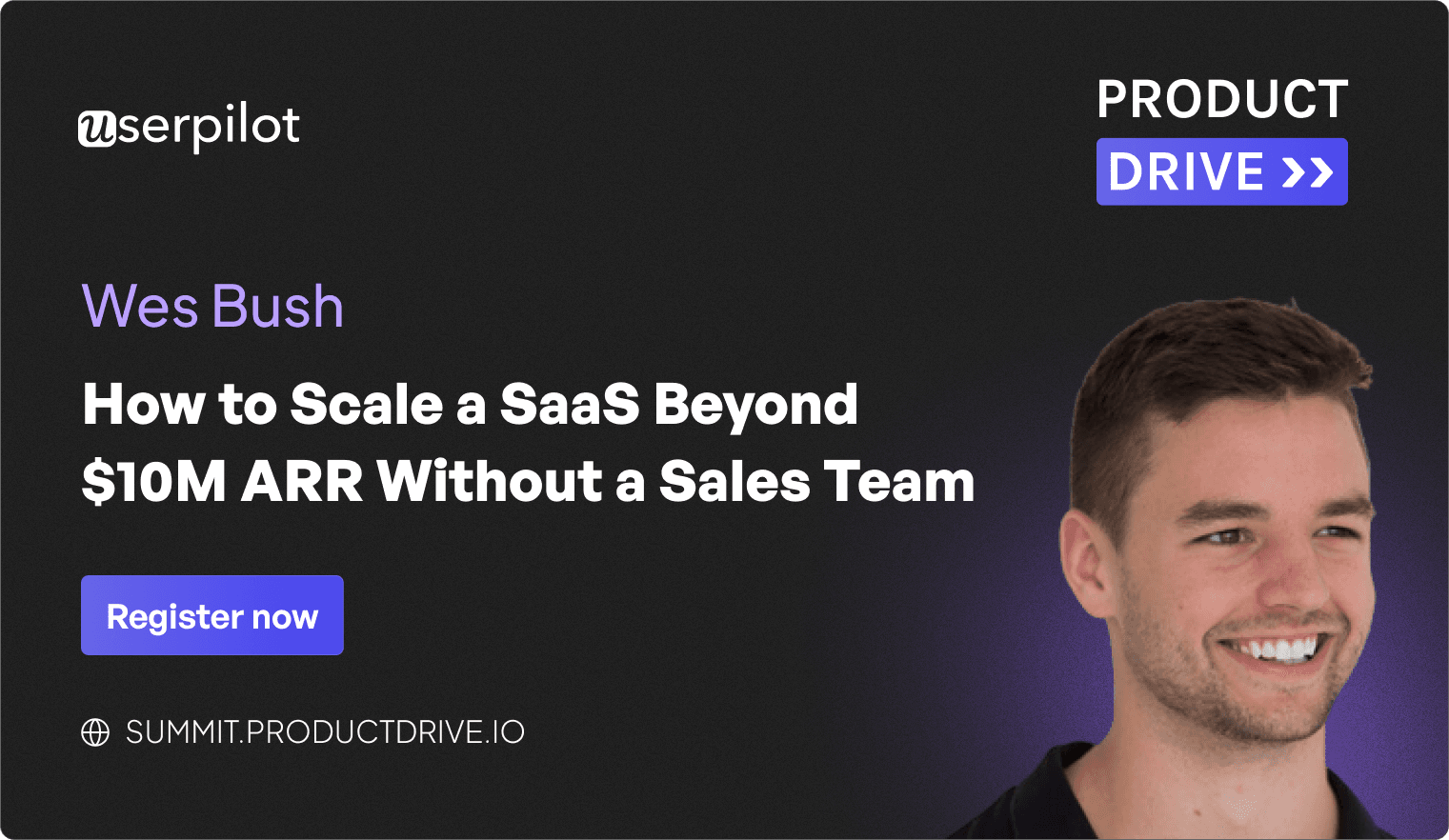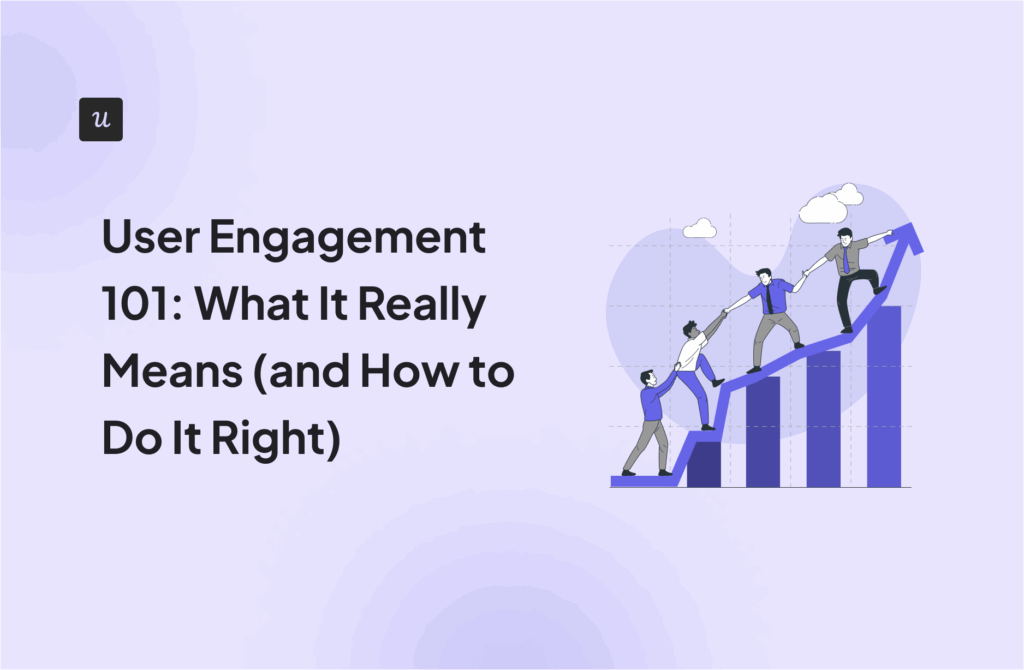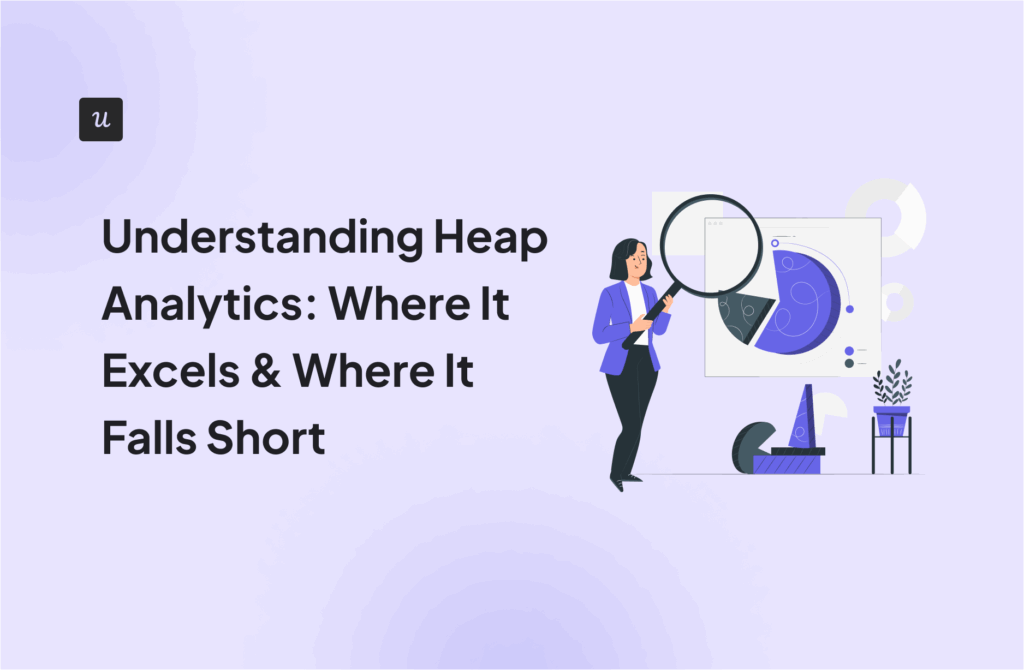
Scaling a SaaS to an 8-figure annual recurring revenue business without a traditional sales team is not just a possibility—it’s becoming a strategic imperative for many.
A leading product expert and CEO of ProductLed, Wes Bush has helped dozens of companies worldwide turn their products into powerful growth drivers.
We hosted him recently at our Product Drive summit, where he also talked about the common mistakes companies make while scaling and offered ways to bypass them.
You can watch his talk right away:
Or keep reading the article if you want the short takeaway!
Try Userpilot Now
See Why 1,000+ Teams Choose Userpilot

PLG motion is great, but it’s only half of the story
While Wes Bush is confident the product-led growth strategy can help businesses scale, he notes that most companies fail at implementing it.
That’s because they often take an oversimplified approach to PLG, focusing only on tactical aspects such as choosing the free model, deciding on pricing, and crafting the onboarding experience, without getting broader organizational support beforehand.
These surface-level practices often lead to lackluster results due to fragmented execution.
So, how do we move beyond this?

Go beyond the surface: Evolving into a product-led organization
To transcend surface-level PLG, a company needs to evolve into a Product-Led Organization (PLO). This involves embedding PLG principles into the core company strategy, operations, and culture.
Key components of a product-led organization include:
- Strategy – All teams must have a clear idea of what winning looks like for the overall business and how you’ll get there.
- User – Everyone in your company should be familiar with different user personas and ideal customer profiles you’re targeting.
- Team – You must have enough people with the right skills to successfully execute a PLG strategy. These include product managers, designers, developers, marketers, and more.
- Data – You need to constantly collect and analyze product usage data to understand where users drop off and where you need to improve.
- Process – You must define a clear step-by-step process for achieving your goals.

How to become truly product-led
The first step is to ask the following questions: How clearly are you the obvious choice for customers in your market?
Start by rating your company on a scale of 1 to 10:
- 1 to 3 – Barely noticeable.
- 4 to 7 – Fairly apparent.
- 8 to 10 – Universally recognized.
As a product-led company, you should focus all efforts and resources on reaching the “universally recognized” mark.

1. Create a winning strategy
First things first—you need a rock-solid product strategy to guide your efforts.
Start by identifying the right market where you want to operate. Make sure you choose a specific and well-defined market that aligns with your offerings. Next, outline a differentiating strategy that’ll help stand out from competitors.
Besides identifying the differentiating factor, it’s also crucial to define what winning looks like for your company. From a simple revenue milestone to an Initial Public Offering (IPO), winning can mean different things for each SaaS business. Make sure everyone in your organization is on the same page about the winning picture.
The final step is to make strategic choices that’ll take your company closer to the win. These can include core values, team structure, resource allocation, and more.

2. Design an intentional free model
How much thought have you put into designing your free model? Giving access to a random set of features and tools might help you attract users, but it won’t result in conversions. Instead, you must design a model that delivers value to users while encouraging them to upgrade.
Let’s take the example of Super Mario, where Mario is a user, and the flower is your free product.
If the flower doesn’t give Mario any real powers, it’s not of much value to the player.
On the other hand, if the flower should make Mario powerful, it’ll help the player overcome obstacles and reach the next level faster. But if it gives Mario too many, they can finish the game without needing any more resources.
Designing an intentional free model is all about finding the balance between giving too few and too many powers to new users.
How do you build an intentional free model for your company?
Start by defining the desired outcome for users at the end of the free model. Next, break the journey to the end goal into three levels and identify the pain points at each level. Build your free model in a way that offers solutions to specific challenges at each level.
3. Create a seamless onboarding experience
Just because you managed to get users to sign up for your free model doesn’t mean they’ll end up becoming paying customers. Well, not if you don’t onboard them properly at least.
Onboarding sets the tone for your future relationship. In fact, it can make or break the relationship.
To ensure an effective onboarding process, you should eliminate unnecessary friction from the flow and focus on getting users to experience the value of your product as fast as possible.
For example, truly PLG companies like Miro and Slack use very simple signup forms with minimal fields and avoid email confirmation to ensure users get into the app without any hassle.
To design a killer onboarding flow, Wes suggests using the “bowling alley framework”.

It consists of three levels:
- Level 1 (Straight Line) – Identify the fastest path to value, i.e., the activation event.
- Level 2 (Product Bumper) – Nudge users toward activation with in-app guidance such as checklists or product tours.

- Level 3 (Conversational Bumper) – If a user drops off from a straight line, pick them up and put them back. For example, you can send a personalized email encouraging them to book a demo or schedule a call with a dedicated account manager for more guidance.
Conclusion
Scaling a SaaS business to an 8-figure ARR without a traditional sales team is possible if you adopt the PLG strategy and turn the product into the main driver of growth.
The key, however, is to go beyond the basics—true success comes from transforming into a full-fledged Product-Led Organization.
As a PLO, you need the right tech stack to execute your strategy, and that’s where Userpilot comes in! With features like in-app surveys, analytics dashboards, A/B testing, and interactive walkthroughs, it can help you with various aspects of your strategy.
Book a Userpilot demo to understand how the platform will fit into your product-led strategy.







